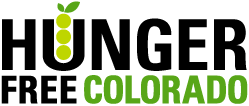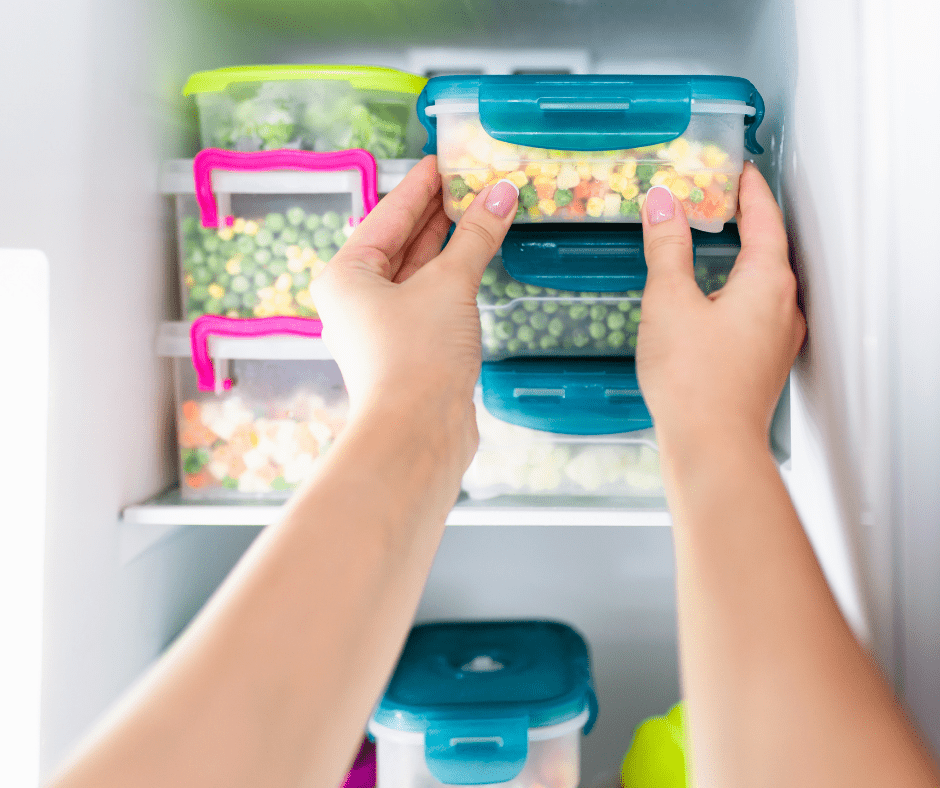Originally published on Food Smart Colorado.

It is estimated that one-third of all food produced in the world is wasted. In the U.S. alone, we lose 30 to 40 percent of our food supply along the food chain. This represents a major financial cost as well as a loss of natural resources. Twenty-five percent of the country’s freshwater is used to grow food that ends up in landfills. This discarded food accounts for 25 percent of the country’s methane gas emissions. The good news is that we all have the power to change this trend by safely saving food that may otherwise go to waste. Freezing food is one of the simplest tools we have to preserve foods at home. It is a fast and easy way to avoid wasting food, consequently saving money and resources!
Make Freezing Food Easy
- Regularly check your refrigerator and pantry for foods that are nearing the end of their shelf-life. Are those bananas about to go bad? Save them by freezing for the next time you make a smoothie or whip up some banana bread.
- If food in your refrigerator is approaching the end of its recommended storage time, freeze it instead of throwing it out! Forgot about those leftovers from the weekend? Move them to a freezer-safe container and pop them in the freezer for a quick lunch to take to work.
- Tray pack fruits, vegetables, and herbs after washing and processing. Spread out produce or herbs on a cookie sheet and freeze. Then pack tightly into airtight containers. Freezing on a tray will help keep produce and herbs from clumping together as they freeze.
- Use foods in order of oldest to newest. Place a dated checklist on the outside of your freezer with what you have and when you froze it.
Prepared Foods
- Baked Goods – Freeze bread, bread crumbs, croutons, cookies, and muffins by packing them tightly into airtight containers or zip-top freezer bags. Place freezer paper in between cookies. Baked goods can be thawed at room temperature or reheated in an oven or toaster.
- Leftovers – Cool leftovers rapidly to prevent bacterial growth. Divide large amounts of food into small containers to cool. Then freeze in meal-sized, air-tight packages so you only thaw what you need. Leftovers can be stored in the refrigerator for three to four days before freezing.
Raw Meats and Fish
- Most fresh meats will need additional packaging (such as butcher paper, foil, or plastic wrap)
if you will be freezing the entire package (since the clear packaging on meats is not usually moisture-resistant). - Store meats in meal-size portions and thaw only what you need. Place a layer of freezer paper or plastic wrap between individual pieces, patties, or slices so they won’t stick together
while freezing. - Cured meats like ham and bacon should only be frozen for one to three months (since salt accelerates rancidity).
Bones
- Freeze bones from roasted turkey, chicken, ham, etc. in zip-top freezer bags and use them for soups and stocks.
Dairy Products and Eggs
- Butter – Sticks or packages of butter will need additional packaging (such as an air-tight container or zip-top freezer bag) since the paper and/or package materials are not air-tight. Whipped butter and margarine do not freeze well. These types of products tend to separate
when frozen. - Cheese – Hard and semi-hard cheeses may become crumbly and mealy when frozen, but they will retain flavor.
- Milk – Milk can be frozen, but quality changes occur upon thawing.
Shake to restore smoothness. - Whole Eggs – Beat whole eggs just until blended; pour into freezer containers; seal the containers tightly; label with the number of eggs and the date and freeze for up to 1 year. Use thawed eggs only when making cooked dishes to prevent foodborne illness. Substitute three tablespoons thawed whole egg for 1 large fresh egg.
Nuts and Flours
- Freeze nuts in air-tight containers to prevent rancidity.
- Grains and flours should be frozen in zip-top bags to prevent rancidity.
Remove excess air before sealing.
Herbs
- Wash herbs on stems under cool water. Shake and blot dry with paper towels.
- Tray pack herbs or freeze them a few sprigs at a time. Herbs destined for soups and stews can be chopped and frozen in ice cube trays. Pack herbs into trays, fill with water, and freeze. Pop out “herb cubes” for cooking.
Fresh Vegetables
- With the exception of green peppers and onions, most fresh vegetables are best blanched before freezing. Blanching halts enzymatic reactions that degrade the quality and nutrient value.
- To blanch, place vegetables in boiling water or steam for one to two minutes. Immediately place in ice water to cool. Drain and pack in airtight containers for storage. Use one gallon of water for each pound of vegetables. For more information, read CSU Extension’s, Freezing Vegetables.
Fresh Fruits
- Wash fruit and prepare for use, for example: stemmed, pitted, peeled, or sliced.
- Small whole fruits, such as berries or cherries, can be tray packed. Cut fruits that discolor quickly, like apples and pears, should be treated with ascorbic acid, citric acid, or lemon juice before freezing to prevent browning and nutrient loss. Bananas are best peeled before freezing. Store whole or sliced in a zip-top freezer bag.
- Fruits can be packed in syrups, sugar, water, or tray packed in a single layer.
For more information, read CSU Extension’s, Freezing Fruits.
Quick Facts….
Collectively in the U.S., we waste:
- $165 billion per year in discarded food
- Over 20 pounds of food per person, per month
- $2000 per family per year
Freezing food is a great way to stretch your grocery budget and understanding how to make the most of your food dollars can help fill your cart without overspending. With a little planning and strategy, shoppers can stretch their food dollars and get the most bang for their buck. Learn more with another article from Food Smart Colorado, Shopping on a Budget.

